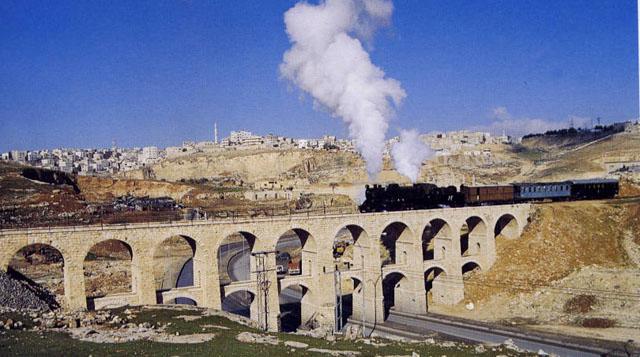You are here
Jordanian documentary on Hijaz Railway wins regional award
Sep 28,2014 - Last updated at Sep 28,2014

AMMAN — A Jordanian film won first place in a competition organised by the Arab States Broadcasting Union and recently held in Tunisia.
Produced by the Jordan Radio and Television Corporation (JRTVC), the winning documentary is titled “Tracks of nostalgia… when roads of lovers meet” and tells the story of the Hijaz Railway that connected Jordan, Syria, Saudi Arabia and Palestine, according to the Jordan News Agency, Petra.
Jordan Television Director Mohammad Tarawneh, who attended the award ceremony, said on Sunday that the Jordanian documentary grabbed participants’ attention.
Inspired by an article by JRTVC Director General Ramadan Rawashdeh and other local and Arab writers, the documentary is produced by Arwa Zu’bi, directed by Mohammad Talafih and narrated by Fakher Abandah, Petra reported.
The documentary describes the museum that embodies the history of the railway through paintings and models.
The film also shows some family and school student trips on the railway, which is one of the Kingdom’s tourist and cultural attractions.
In addition, the documentary includes some interviews with citizens on their views about the railway, according to Petra.
The Hijaz Railway is one of the traditional landmarks associated with Jordanian history, connected with events such as the Great Arab Revolt.
King Abdullah I used the railway station building in Maan Governorate as his headquarters and also travelled on one of its trains from Maan to Amman, according to the Jordan Hijaz Railway website.
The railway was constructed with the aim of transporting pilgrims to Medina, according to the Jordan Hijaz Railway Corporation.
Ottoman Sultan Abdul Hamid II called on Muslims around the world to collect donations to realise the project, which cost five million Ottoman gold liras.
The Hijaz track, which was designed by some 17 German engineers, is 1,303km long, connecting Damascus with Medina via Amman and Maan.
The track never made it to Mecca because work was interrupted by the outbreak of World War I.
Jordanians, especially Maanis and Turkish soldiers took part in the construction of the railway, and Mafraq, Maan, Qatraneh and Amman stations were the main stops in the Kingdom.
Today, trains still run from the Amman station in Mahatta for tourist trips, transporting passengers from the capital to Jizah and Qatraneh.
The Maan station now solely operates freight trains that carry phosphates from the southern mines to the Port of Aqaba.
Related Articles
An initiative launched by the Jordan Hijaz Railway Corporation (JHRC) to transport passengers to Queen Ali International Airport (QAIA) during the recent snowstorm is under study to be turned into a permanent service, JHRC Director General Salah Lozi said Sunday.
AMMAN — Minister of Transport Wajih Azaizeh on Tuesday emphasised the necessity to ease all obstacles facing the passenger transport project
Thousands of Jordanian Muslims returned this week from Mecca after undertaking the greater pilgrimage known as Hajj.

















